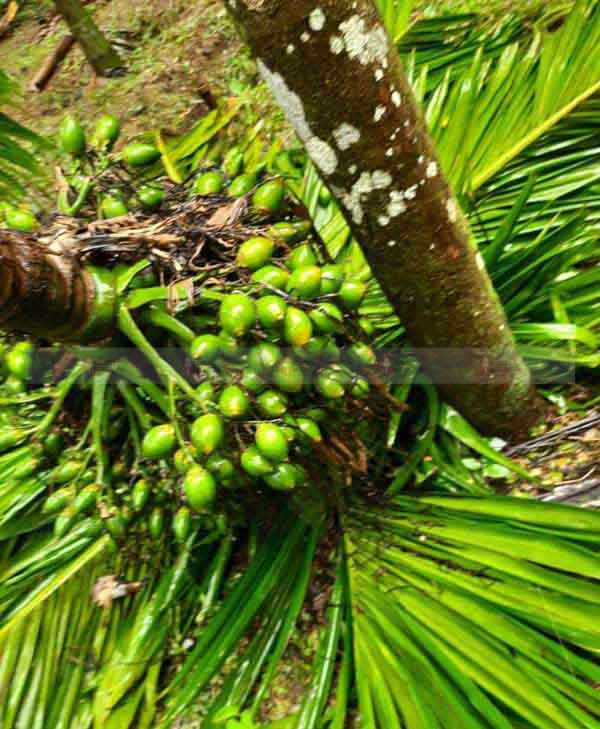ಕಳೆದ ಒಂದು ವಾರದಿಂದ ಮಲೆನಾಡು ಪ್ರದೇಶದಲ್ಲಿ ಉತ್ತಮ ಮಳೆಯಾಗುತ್ತಿದೆ.ಕಳೆದ ಮೂರು ದಿನಗಳಿಂದಂತೂ ಭಾರೀ ಮಳೆಯಾಗುತ್ತಿದೆ. ಮಲೆನಾಡು ಭಾಗದಲ್ಲಿ ಪ್ರಮುಖ ಬೆಳೆ ಅಡಿಕೆ. ಈಗ ಅಡಿಕೆ ಬೆಳೆಗಾರರಿಗೆ ಆತಂಕ ಶುರುವಾಗಿದೆ. ಶಿರಸಿಯ ಕೆಲವು ಕಡೆಗಳಲ್ಲಿ ಎಳೆ ಅಡಿಕೆ ವಿಪರೀತ ಬೀಳುತ್ತಿದ್ದು, ಕೊಳೆರೋಗದ ಆತಂಕವೂ ಎದುರಾಗಿದೆ.
ಈ ಬಾರಿ ಅಡಿಕೆ ಬೆಳೆಗಾರರಿಗೆ ಅಡಿಕೆ ಒಣಗಿಸುವುದಕ್ಕಷ್ಟೇ ಉತ್ತಮ ವಾತಾವರಣ. ವಿಪರೀತ ಬಿಸಿಲಿನ ಕಾರಣದಿಂದ ಅಡಿಕೆಯ ಹಿಂಗಾರ ಒಣಗಿತ್ತು, ಅದಾದ ನಂತರ ಮಳೆ ಸುರಿಯುವ ಆರಂಭವಾದ ಬಳಿಕ ವಿಪರೀತವಾಗಿ ಎಳೆ ಅಡಿಕೆ ಬೀಳಲು ಶುರುವಾಗಿದೆ. ಅದು ಅಡಿಕೆ ಬೆಳೆಯುವ ಮಲೆನಾಡು ಹಾಗೂ ಕರಾವಳಿ ಭಾಗದಲ್ಲಿ ಹೆಚ್ಚಾಗಿ ಕಂಡುಬಂದಿದೆ. ಶೇ.25-30 ರಷ್ಟು ಎಳೆ ಅಡಿಕೆ ಬಿದ್ದು ನಾಶವಾಗಿರಬಹುದು ಎಂದು ಅಂದಾಜಿಸಲಾಗಿದೆ. ಇದೀಗ ಕಳೆದ ಒಂದು ವಾರದಿಂದ ಸತತವಾಗಿ ಮಳೆಯಾಗುತ್ತಿದೆ. ವಾತಾವರಣದ ಉಷ್ಣತೆ ಇಳಿಕೆಯಾಗಿದೆ, ತೇವಾಂಶವೂ ಹೆಚ್ಚಾಗಿದೆ.ಅಡಿಕೆ ಕೊಳೆರೋಗಕ್ಕೆ ಉತ್ತಮ ವಾತಾವರಣ ಸೃಷ್ಟಿಯಾದಂತಾಗಿದೆ. ಈಗಾಗಲೇ ಶಿರಸಿಯ ಕೆಲವು ಕಡೆಗಳಲ್ಲಿ ಕೊಳೆರೋಗ ಬಾಧಿಸಿದೆ ಎಂದು “ಪ್ರಜಾವಾಣಿ” ವರದಿ ಮಾಡಿದೆ.
ದಕ್ಷಿಣ ಕನ್ನಡದಲ್ಲೂ ಮಳೆಯ ಅಬ್ಬರವು ಅಡಿಕೆ ಬೆಳೆಗಾರರ ಆತಂಕಕ್ಕೆ ಕಾರಣವಾಗಿದೆ. ಈಗಾಗಲೇ ವಿಪರೀತ ಗಾಳಿಗೆ ಅಡಿಕೆ ಮರ ಮುರಿದು ಬಿದ್ದು ನಷ್ಟವಾಗಿದೆ. ಮಳೆಯ ಕಾರಣದಿಂದ ತೋಟದಲ್ಲಿ ನೀರು ನಿಲ್ಲುವ ಪರಿಸ್ಥಿತಿ, ಹಿನ್ನೀರು , ನದಿ-ಹೊಳೆಯ ನೀರು ತೋಟಕ್ಕೆ ನುಗ್ಗುವುದು ಕಂಡುಬಂದಿದೆ. ಆದರೆ ಕೊಳೆರೋಗದ ಬಗ್ಗೆ ಇದುವರೆಗೆ ಮಾಹಿತಿ ಲಭ್ಯವಾಗಿಲ್ಲ. ಇದೇ ಮಾದರಿಯ ವಾತಾವರಣವು ಇನ್ನೂ ಒಂದು ವಾರ ಕಂಡುಬಂದರೆ ಈ ಬಾರಿ ಅಡಿಕೆ ಬೆಳೆಗಾರರು ಸಂಕಷ್ಟ ಎದುರಿಸಬೇಕಾಗಬಹುದು.
Are you aware of the impact heavy rains are having on arecanut growers?
Mahali Roga is causing a lot of concern among the farmers.The strong winds are destroying the arecanut trees. This is a major blow to the livelihood of many farmers.#ArecanutGrowers #MahaliRoga pic.twitter.com/LSIbzzo9Aa— theruralmirror (@ruralmirror) July 19, 2024
Arecanut farmers are increasingly concerned about the outbreak of Mahali Roga, a devastating fungal disease, due to the recent spell of heavy rainfall. This disease, which primarily affects the fruits of the arecanut palm, thrives in humid conditions, making the current weather an ideal environment for its spread. The incessant rain has not only increased the humidity levels but also disrupted routine farm activities like pruning and spraying fungicides.
Consequently, farmers are witnessing early symptoms of Mahali Roga, such as yellowing and wilting of leaves, which if left unchecked, could lead to severe yield loss. The economic impact is profound as arecanut is a high-value cash crop for these farmers. Compounding their anxiety is the lack of timely access to fungicides and expert agricultural advice, often due to logistical issues caused by the weather. Small-scale farmers, in particular, are hit hard as they lack the resources to implement adequate preventive measures. Some are resorting to traditional methods of disease control, though these are less effective compared to scientific interventions. The local agricultural extension services are ramping up efforts to educate farmers on disease management, but the scale of the outbreak necessitates a more coordinated and immediate response. Overall, the arecanut farming community is in a state of high alert, hoping for drier conditions to slow the spread of this perilous disease.













